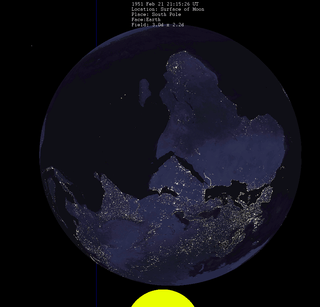February 1951 lunar eclipse
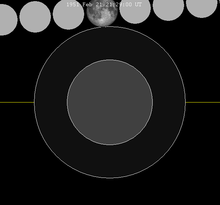
A penumbral lunar eclipse took place on February 21, 1951.[1]
Grazing penumbral eclipse
The magnitude of the eclipse was 0.007 or a miss depending on definitions of the penumbral shadow is defined. Bao-Lin Lui's Canon of lunar eclipses list it as the last eclipse of a saros cycle, with magnitude 0.007, while NASA lists February 10, 1933 as the final series event, with this one missing the shadow.[2]
As seen from the lunar south pole the sun missing the sphere of the earth, excluding the atmosphere.
Related lunar eclipses
Lunar year series
| Descending node | Ascending node | |||||
|---|---|---|---|---|---|---|
| Saros | Date Viewing |
Type Chart |
Saros | Date Viewing |
Type Chart | |
| 103 | 1951 Feb 21 |
Penumbral |
108 | 1951 Aug 17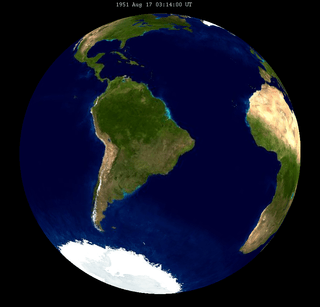 |
Penumbral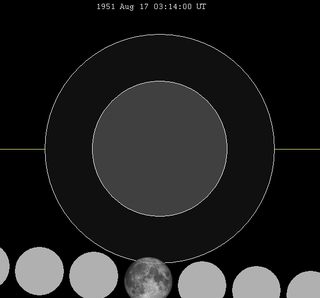 | |
| 113 | 1952 Feb 11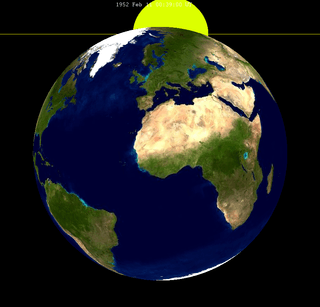 |
Partial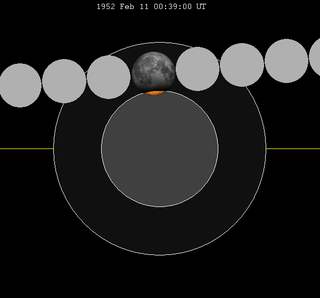 |
118 | 1952 Aug 5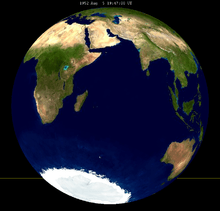 |
Partial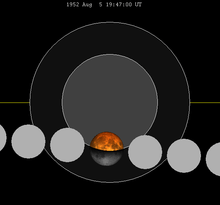 | |
| 123 | 1953 Jan 29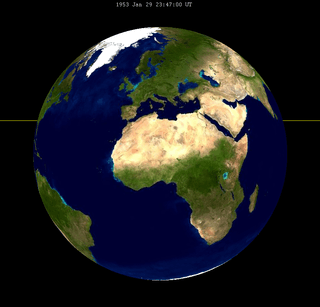 |
Total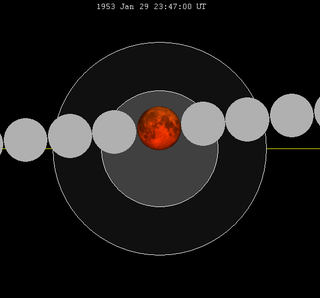 |
128 | 1953 Jul 26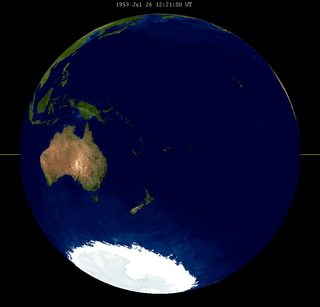 |
Total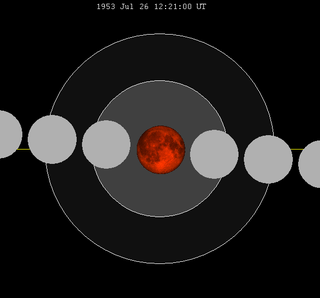 | |
| 133 | 1954 Jan 19 |
Total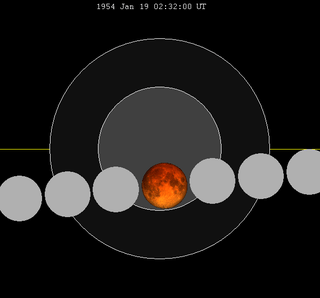 |
138 | 1954 Jul 16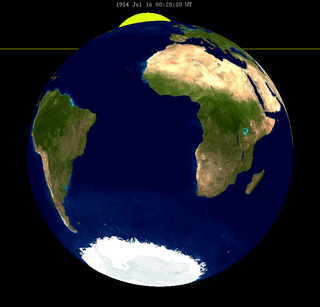 |
Partial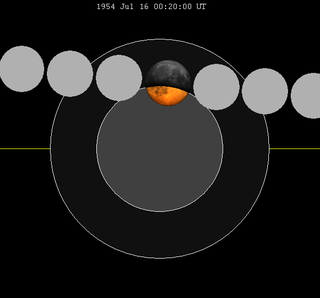 | |
| 143 | 1955 Jan 8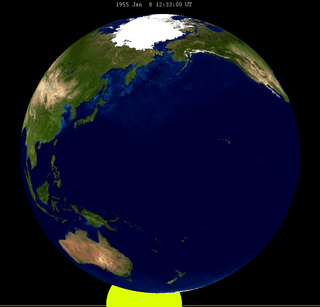 |
Penumbral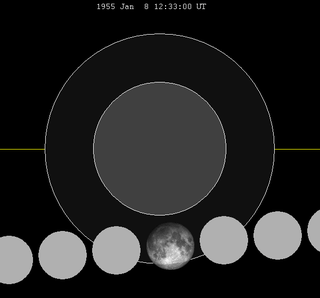 | ||||
| Last set | 1951 Mar 23 | Last set | 1951 Sep 15 | |||
| Next set | 1955 Nov 29 | Next set | 1955 Jun 5 | |||
Metonic cycle (19 years)
This is the third of five Metonic lunar eclipses.
The Metonic cycle repeats nearly exactly every 19 years and represents a Saros cycle plus one lunar year. Because it occurs on the same calendar date, the earth's shadow will in nearly the same location relative to the background stars.
| Descending node | Ascending node | |||||
|---|---|---|---|---|---|---|
| Saros | Date | Type | Saros | Date | Type | |
| 103 | 1951 Feb 21 | Penumbral | 108 | 1951 Aug 17 | Penumbral | |
 |
 | |||||
| 113 | 1970 Feb 21 | Partial | 118 | 1970 Aug 17 | Partial | |
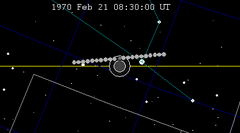 |
 | |||||
| 123 | 1989 Feb 20 | Total | 128 | 1989 Aug 17 | Total | |
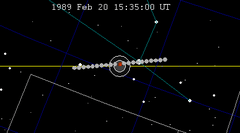 |
 | |||||
| 133 | 2008 Feb 21 | Total | 138 | 2008 Aug 16 | Partial | |
 |
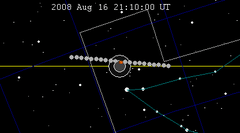 | |||||
| 143 | 2027 Feb 20 | Penumbral | 148 | 2027 Aug 17 | Penumbral | |
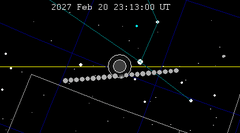 |
 | |||||
See also
- List of lunar eclipses
- List of 20th-century lunar eclipses
Notes
References
- Bao-Lin Lui, Alan D. Fiala, Canon of lunar eclipses 1500BC-3000AD, 1992, p. 157, no. 8397, magnitude 0.007.
External links
- NASA chart
- 1951 Feb 21 chart Eclipse Predictions by Fred Espenak, NASA/GSFC
